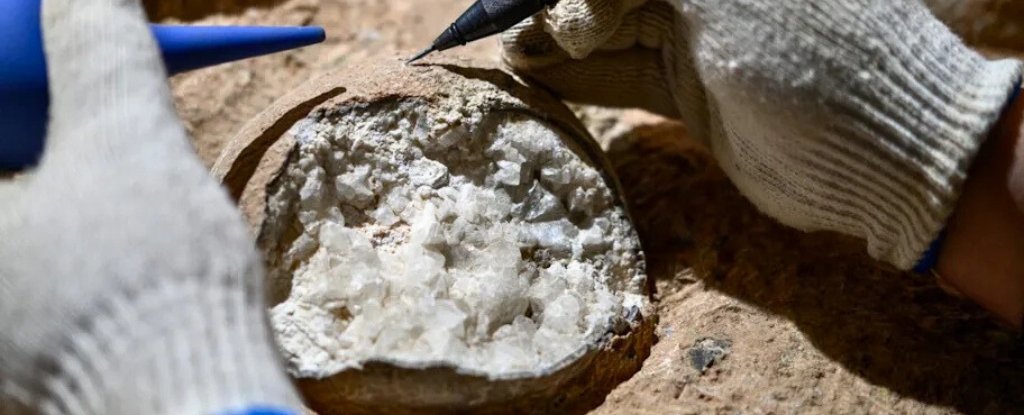Much of Earth’s ancient past lies beneath the sea. Professor Jerome Dobson of the University of Kansas coined the term “aquaterra” to describe now-submerged lands once inhabited by early humans who used them to migrate. These regions vanished as sea levels rose after the last ice age.
In collaboration with Giorgio Spada of the University of Bologna and Gaia Galassi from the University of Urbino, Dobson examined these landscapes using an advanced sea-level reconstruction model.
The researchers tracked human migration patterns between Africa and Eurasia over the past 30,000 years, focusing on coastal corridors, especially across Egypt and the Red Sea region.
Reconstructing ancient shorelines
The team’s method involved Glacial Isostatic Adjustment (GIA) models, which simulate how Earth’s crust responds to glacial melting and sea-level changes.
Using the SELEN4 model, they reconstructed ancient coastlines with accuracy, including transitions around the Mediterranean, Red Sea, and Nile Valley.
Their findings reveal that over 11 percent more land existed at the Last Glacial Maximum (LGM) than today. This exposed land formed crucial migration bridges.
Dobson emphasized, “We hope this enables people to see and explore the landscapes that were exposed during the last ice age.”
Paths early humans once traveled
Maps generated from their study reveal several alternative routes into and out of Africa.
These include a path from Foul Bay to the Nile River, the overland corridor across the Isthmus of Suez, the Gulf of Aqaba passage leading to the Levant, the Bab el-Mandeb crossing into Arabia, and the sea routes through the Sicily and Messina Straits.
Genetic analysis supports several of these paths. Wohns et al. (2022) mapped ancient DNA lineages, revealing strong ancestral roots near Meroë in Sudan. Archaeological evidence remains scarce in some areas, perhaps due to submersion.
“The early human haplotype center appears to be in northeast Sudan,” Dobson said. “That wasn’t a shock, somewhat expected by the DNA experts who discovered it. There were clear connections going up into the Levant.”
“Archaeological literature often emphasizes the southern route across the Bab el-Mandeb, but the maps they produce show little connection between the western and eastern sides of that divide.”
Lost city under the Red Sea
One striking hypothesis concerns Foul Bay on Egypt’s Red Sea coast. When sea levels were low, it could have served as a major crossing and port.
The researchers propose the existence of “Berenice Aquaterra,” a now-lost precursor to the later Greco-Roman port, Berenice Troglodytica.
The team examined historical maps. Confusion over Berenice’s location supports the idea that early humans may have seen the city shift over time due to rising seas.
Many maps from Kamal’s cartographic atlas show Berenice in multiple positions around Foul Bay.
Submerged clues in coral reefs
Foul Bay holds the world’s highest known concentration of patch coral reefs. Dobson’s surveys identified over 300 such reefs in formations that sometimes resemble human made structures.
These reefs require hard surfaces – possibly natural rock or submerged ruins – to grow.
“The unusual abundance of patch coral formations in Foul Bay raises new questions about human settlements,” the researchers wrote. Their work suggests these reefs may have grown atop stone buildings or structures lost to time.
New view of Egypt’s origins
The team also explored how these submerged routes relate to Egypt’s earliest civilizations. Settlements like Al-Badari and Naqada appear to show stronger ties with Nubia and the Red Sea coast than to Lower Egypt.
Archaeological patterns indicate a movement from Upper to Lower Egypt, challenging the idea that the Nile was settled strictly from north to south.
This supports a possible migration corridor from Foul Bay to the Nile River, bypassing the long overland Suez crossing.
Digging into the sea floor
The researchers urge underwater archaeological investigations in Foul Bay. They propose a five-step research model involving sea-level mapping, geospatial modeling, and excavation.
“We advocate urgent application of this five-step process to the Suez and Foul Bay crossings,” they concluded. This research encourages a deeper and more curious look at the ancient lands now hidden beneath the ocean.
These submerged regions, known as aquaterra, were once part of daily life for early travelers, settlers, and traders. Over time, rising sea levels erased the presence of early humans from view, leaving behind few visible traces of their stories.
Today, with improved mapping models and underwater archaeology, scientists have new ways to explore what was lost.
By studying these vanished coastlines, researchers hope to uncover how early people migrated, settled, and lived – revealing chapters of human history that have long remained out of reach.
The study is published in the journal Comptes Rendus Géoscience.
—–
Like what you read? Subscribe to our newsletter for engaging articles, exclusive content, and the latest updates.
Check us out on EarthSnap, a free app brought to you by Eric Ralls and Earth.com.
—–


